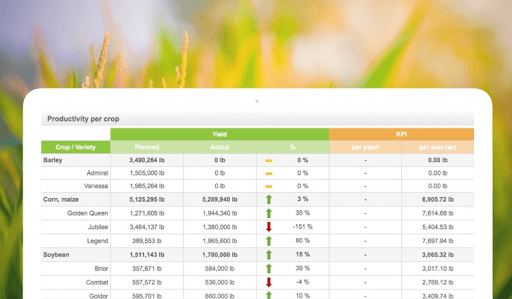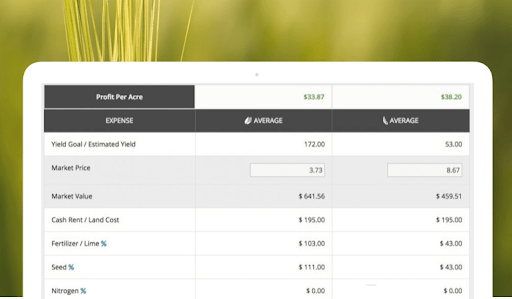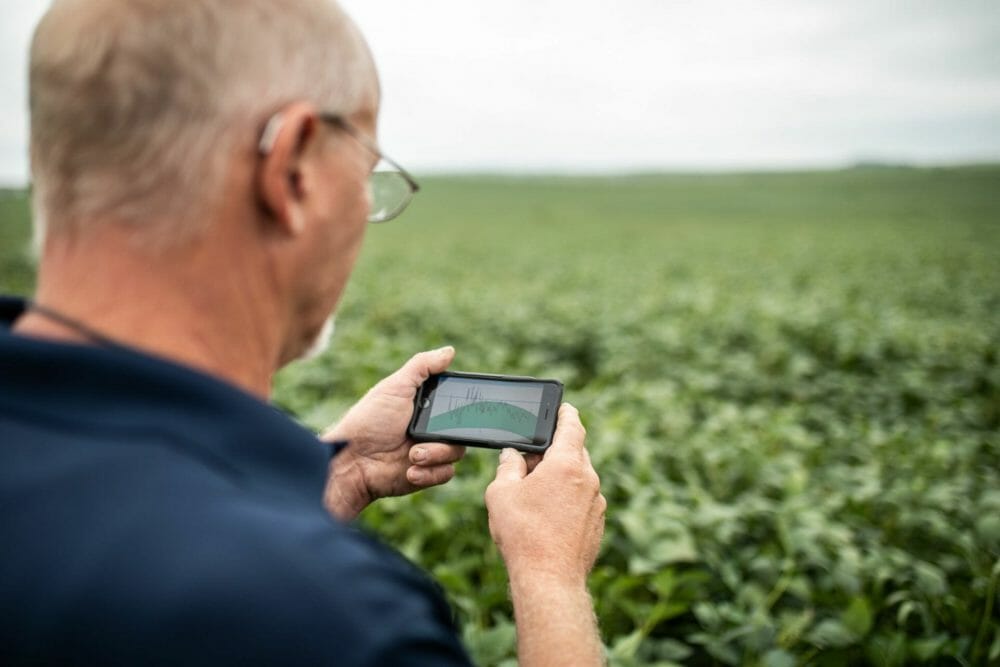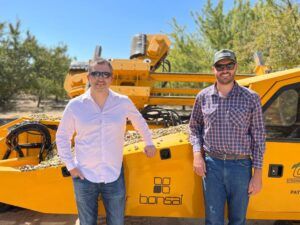Editor’s note: Dmytro Lennyi is agritech practice leader at Intellias, a software engineering and consulting firm based in Lviv, Ukraine, that assists tech companies with their software development needs. This article reflects the views of the author, and not necessarily those of AFN.
Every time I visit agritech events, I discover new farm management software. Large and small companies from the agriculture and technology sectors can offer a valuable set of digital farming tools. Their farming software has ever-present connectivity, collects a wide range of data, and offers meaningful analytics on farmer-friendly dashboards.
Some of these solutions can predict return-on-investment (ROI) from yields by applying data science, machine learning, and artificial intelligence. According to MarketsandMarkets, the farm management solutions market is growing at a compound annual growth rate of 14%, and will reach $2 billion in value by 2023.
Though farm management software provides a bird’s-eye view of profitability, it still misses insights at the field level. For years, predicting the RoI of each field has been a tempting yet unreachable fruit. Several factors have kept farmers guessing which fields are producing the lion’s share of profit and which are responsible for losses:
- Difficulties determining the rental cost of each field, which is often hidden in the total cost of land rental.
- Counting all types of crops, grains, and seeds as equal products.
- Comparing total sales and expenses.
- Overlooking fertilizer and irrigation costs.
- Insufficient measures to protect seeds.
- Severe weather conditions affecting crops.
- Unpredictable costs of pest control.
- Harvesting expenses.
- Labor costs.
- Storage of products.
- Rental and transportation costs of agricultural machinery.
- Lack of open data from other growers and agribusinesses on cultivation processes.
What we see now are farmers overwhelmed with data but still lacking critical insights. Farmers cannot distinguish which field is best for which crop or which fields will continue to be profitable in the future. They can only experiment and track results, which isn’t enough to predict outcomes over the longer term. Often, the only insights they can compare are the total spending within a selected timeframe and revenue from sales.
Why per-field ROI is so important for farmers
Predicting the overall ROI is a big deal. But ROI can be completely different for each field, which means field performance should be addressed appropriately.
For example, a farm data management tool may indicate your total RoI remains at acceptable levels, so you have no reason to stop growing corn. But let’s say one of your fields is completely unsuitable for corn or too exhausted to grow it. Without field-specific ROI data, you may continue to calmly plan corn for this field for the next year without realizing the potential losses you face.
Another factor that often goes unnoticed is fuel consumption. Say you’ve already bought several barrels of fuel for machinery to harvest corn that never matured. This can cause a severe drop in ROI. But you could spend years figuring out how it’s happening.
Combining farm crop management software with IoT sensors for measuring soil and weather conditions can save the day. Sensors can give you information about fields that can help you prevent unsuitable usage. Still, all this information can be lost among the endless data points your dashboard throws at you every day – but only if it isn’t correlated with relevant indicators, such as ROI.
The state of per-field RoI in the digital farming market
You’ll find plenty of good options when you Google “best agriculture farm management software.” But looking for a tool to predict per-field ROI is a dead end. So what’s the problem? How is it possible that the field-level RoI niche is empty?
The farm management software market offers ROI calculators. They cope with common tasks in a mere click. But they’re missing per-field ROI prediction features. What follows are a few examples of well-geared ROI calculators and farming software available for commercial use.
Agrivi: complete farm management

Agrivi’s most relevant farm automation product for predicting ROI is its tool that generates farm and analytics reports. It collects data on costs for every crop variety and calculates the ROI for all crops produced. Users also get reports on other costs, working hours, and field activities. Agrivi’s solution can manage several critical factors influencing the total ROI per field, with a deep focus on costs for crop production.
Farmserver: RoI calculator

Farmserver calculates ROI based on overall costs and costs per bushel. You can manually enter values or upload data files. But a farmer would probably have to spend weeks manually updating field data and correlating it with field size.
FUSE: RoI calculator

Compared to Agrivi and Farmserver — which focus on ROI per crop — FUSE invites users to enter data on their machinery, calculating costs for its rent and maintenance to predict ROI. But there’s no word on per-field RoI here either.
What makes per-field ROI so hard to predict?
First of all, to calculate the exact ROI for each field, farm management software needs to automatically collect large data sets through robust integrations.
Accounting systems play a key role. But challenges appear when agricultural businesses use systems like 1C, one of the most popular accounting systems (and sometimes the only accounting system available) in eastern European countries. This software lacks native integration capabilities, and only custom development can solve this task.
In countries like the UK and the Netherlands, there are many accounting solutions that offer more integration options. FinancialForce, built on the Salesforce platform, comes to mind; eAccounts is another common choice.
Keeping finances aligned with your farming operations makes a difference. In the near future, we’ll definitely see more integrations between initially independent solutions. Agritech providers will join efforts with software providers from other fields to offer borderless ecosystems of solutions for farming, accounting, and logistics.
Overcome challenges and see what happens next
Like any innovation, farm management systems for predicting per-field ROI face numerous challenges on their way to providing farmers with a clear picture of their profits. But the benefits of robust integrations, automation, and insight-based decisions fully justify the investment of time and effort. Farm management systems for predicting RoI can identify potential losses early due to inappropriate field use or overestimated yields.
Moreover, per-field insights can help prevent potential losses in the future by predicting drops in yields based on measurements of soil and weather conditions. Preventive measures can also increase ROI by enabling previously untapped opportunities like prompt and adequate responses to field conditions, as well as by reducing operating costs.
Use case of farm management software with per-field ROI
Recently, Granular by Corteva announced the launch of Granular Insights. This replaces legacy spreadsheets with a data-rich solution for estimated revenue per field. The system promises to automate a lot of the manual work farmers have to do in order to find each field’s bottom line.
The company says farmers can use Granular Insights to analyze ROI, make seed decisions, monitor field performance, and track harvest moisture levels — which appear as map layers — to compare revenue per field. Sid Gorham, Granular’s CEO and Corteva’s president, calls the lack of such solutions the main pain point for farmers.
“Especially in today’s environment, farmers need to have better visibility into their bottom line. We realized one of the greatest pain points on the farm is that a farmer’s data is sitting all over the place, and it takes a lot of time and effort to put it all together,” he said.
So what should a farm management system look like to calculate the exact per-field RoI and predict future fluctuations?
Let’s say a farmer has collected soil and moisture measurements from different fields to cultivate selected crops. The farmer’s crop management system is integrated with a global ecosystem where agribusinesses and other growers share data on the same crops, so it’s apparent where it’s better to grow those crops.
Find out why AgFunder invested in Israeli farm management software startup Fieldin here.
After collecting measurements, the farmer can compare them with standard criteria provided by farming software and start planting seeds on selected fields. After harvesting the long-awaited yields, the farmer can then monitor sales correlated with the costs invested in the crops. For this, the farmer can use a tool for budget planning that tracks all ongoing expenses and revenue from sales. As a result, total business RoI appears relatively high but still below the prediction. To recognize the reason for this mismatch, the farmer can bring more input data that’s not provided by the farming system by default. But this all may be too much for a busy farmer. What should be done?
Determining per-field RoI from the beginning would give a clear picture of what’s missing and where. Binding collected data on particular field conditions to each acre would equip farmers with a proper strategy and reasonable expectations. After experimenting with new crops, the farmer would see where exactly the experiment went wrong, bringing the lowest ROI.
Getting this level of transparency and cost traceability could saturate farm management systems with data to compare how similar fields perform under similar conditions and project per-field ROI. For the next season, the farmer could plan their spending based on harvesting fewer crops from particular fields. Knowing a field’s exact size, they could budget to cover fuel for machinery and payments for workers, while additional money could be spent on irrigation and fertilization. Or savings could be spent on further cultivation of other crops, including on supplying new seeds, fertilizers, and special machinery.
Integrations play a crucial role here. Values from an accounting system should be automatically synchronized with farming operations in the field. A farming system can track fuel consumption by harvesters for each field using remote sensors and can correlate this data with farmers’ budgets to show the direct impact on the per-field ROI.
So: what integrations do farming systems need?
- Accounting – farmers already use accounting systems but require advanced modules to collect real-time data from fields as inputs for cost calculations.
- Human resources management systems – farming is a collective activity, so a login and logout system for field workers is a must.
- Digital banking – payments for workers should be included in the cost per field based on automated invoices from digital banks.
- Business intelligence and analytics – predict events before it’s too late.
- Mapping – geospatial field data and coordinates along with cost layers and recent updates should appear on field maps.
- Connected equipment – collect data from machinery in the field to know what resources you spend and the crops you get in return.
- Fertilization supply – buy for each field only when needed.
- IoT sensing – collect soil and weather measurements to calculate potential costs for irrigation and losses due to severe conditions.
- Satellites – space observations related to field locations.
- Aerial imagery – monitor crop yields and map crops on accurate farming maps.
More than “grow more with less”
It’s time for farmers to reach out and grasp the desired fruit of predictable per-field ROI. Field-oriented precision farming could be key to predictable business operations with more accurate planning and wiser resource use. Equipping farmers with insights on particular fields leads to sustainable agricultural practices throughout farming operations.
“Grow more with less” sounds like a good motto. “Get predictable profits from each field with less footprint” sounds like a real strategy.




